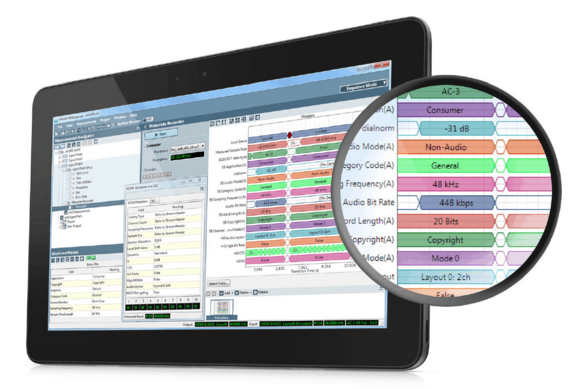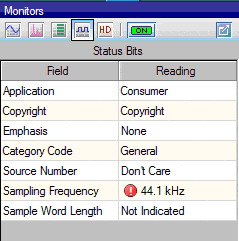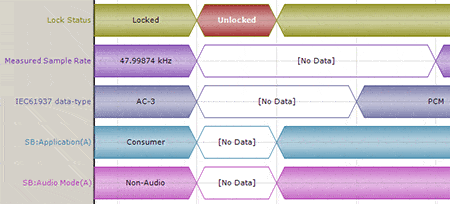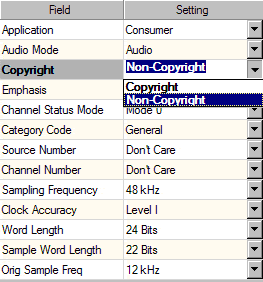
Modern consumer devices such as televisions, Blu-ray players, and receivers typically use a digital interface such as S/PDIF, Toslink, HDMI to transmit audio signals. In addition to the digital audio data, these interfaces also carry auxiliary information about the audio signal, metadata.
This metadata includes channel status and user data as well as the HDMI audio infoframe. Setting or reading metadata parameters incorrectly can lead to problems with the decoding of the digital audio.
A systematic approach to analyzing the protocol layer of a digital audio stream includes verifying that transmitters are setting all the values correctly and that receiving devices respond to those parameters in the desired fashion.
Only by systematically verifying each parameter is it possible to insure that a device will be compatible with the wide range of transmitters and receivers that an end user may connect it to.
About channel status and user status bits
Channel and user status bits are embedded in all IEC60958 (S/PDIF & Toslink), AES3, and HDMI digital audio streams.

The channel status bits can be displayed and set in plain English or as raw hexadecimal values. All channel status values including audio mode, sampling frequency, word length, and sample word length can be read and set.
The user status bits are typically used to carry auxiliary data, their use is not pre-defined. They are available for end-users or device manufacturers to carry additional information. Using the APx you can set and read user bits in hex form.

Comparing metadata to actual audio
The APx Metadata monitors decode and display metadata values as they are received from the device under test. One monitor handles HDMI audio InfoFrame data, and the other displays channel status and user bits. Both monitors also display the actual measured input sample rate. When the instrument is receiving Dolby and dts signals it also displays the IEC stream type, ACMOD/AMODE value, dialog normalization level and bit rate.
Discrepancies between the indicated metadata and the actual stream being received are automatically identified and flagged (for example, if the input sample rate is 48kHz but the channel status indicates that it should be 44.1kHz).
By comparing the metadata being read against the actual audio signal being measured by APx, the device’s ability to transmit metadata correctly can be verified systematically. The results of such measurements are invaluable in verifying that a device under test is behaving as designed.
Verifying metadata behavior over time
Some metadata changes occur fleetingly fast, yet they can cause audible glitches and pops. It’s also very useful to know about order of operations during the first milliseconds as a device reacts to new events such as a hot plug or sample rate change.
The APx Metadata Recorder captures metadata changes over time, displaying up to 15 different metadata fields for periods up to 168 hours. The data is presented in a logic-analyzer like view to make relative start and stop times easier to identify.


Verifying error handling with invalid channel status bits
Under normal test conditions, APx’s own metadata matches the actual audio being streamed. This allows trouble free testing of the device where metadata is not a concern. However, in the real world, devices are likely to encounter incorrect metadata at some point.
To test how a device handles incorrect metadata, the Auto values can be overridden using the Metadata Editor Panel. Channel status bits and HDMI Audio InfoFrame data can be set to any value, even invalid ones.
The device’s reaction can then be verified by APx, for example glitches can be caught with the measurement recorder or the protocol monitors can read what metadata the device passes through: the bad original or a corrected value.